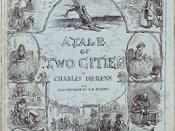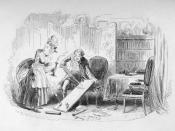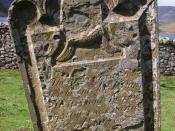"It was the best of times, it was the worst of times." This is one of the most splendid openings that I have ever seen. It has been quoted innumerable times, in other books, on television, in movies. It gives the reader entry into a book that highlights the ultimate heights of human valor and dignity, juxtaposed with the ultimate depths of human evil. I have run across it everywhere, but had not read the book. So I finally read it, and am glad I did.
;Generally speaking, this book is a little difficult for me, but I went through without the help of E-dictionary, and I was deeply impressed by the attractive language. As a matter of fact, I don't like this abbreviated edition of the book, as it has cut down many of the important parts of the story, such as Carton and Darnay's contention to Lucie's love (the absence made me puzzled when I was facing the quick marriage, and Carton's sacrifice in the end.),
and Lucie's comfort to Dr. Manatte when he was suffering his mental incapacity. It is a limitation of the book, which makes the difficult book even tougher.
Then come to the memorable characters. A Tale of Two Cities centers on the lives of Charles Darnay, a French Nobleman, Lucie Manette, and Sydney Carton, a young Englishman who looks remarkably like Darnay. But there is some characters that receive more attention than may have been necessary. For example, Madame Therese Defarge, a major antagonist who seeks revenge, being a key revolutionist. She sits all day in the shop, silently compiling a knitted register of the enemies of the Revolutionaries, most of whom are going directly to Madame Guillotine. She is very stubborn and unforgiving in her cunning plan of revenge on...


